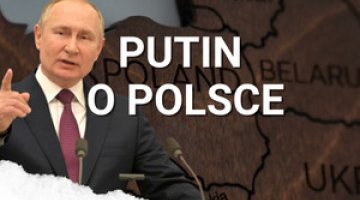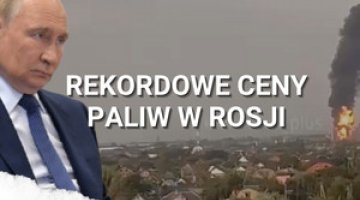Ukraine: The first day of the Russian invasion

On 25 February, the President of Ukraine Volodymyr Zelensky signed a decree entitled ‘On universal mobilisation’, which will cover males aged 18 to 55, to be carried out within 90 days. This is due to the country’s deteriorating military situation. Its armed forces are trying to contain the pressure from Russian troops approaching Kyiv from the north and north-east. This morning, reconnaissance units of the Russian Armed Forces reached the suburbs of the Ukrainian capital from the north. Shipments of weapons for formed Territorial Defence units (TD) are entering the city, which means that its defence with all available forces is being prepared.
Fierce fighting is taking place in other regions, including Sumy, where clashes on the city streets are taking place, and also north of the capital (along the Ivankiv-Dymer line) and the Antonivskiy Bridge on the Dnieper near Kherson (towards Mykolayiv). Active military operations are being carried out along practically the entire border line in the Kharkiv region. The Russians have taken control of part of the Kyiv-Moscow highway. In the morning, a grouping of Russian troops launched an offensive from the territory of Belarus; on the previous day it broke through the fortifications on the border with the Zhytomyr oblast.
The Ukrainian command has defined the Russian attack as coming from four directions: northwards towards Kyiv; towards Kharkiv; the special operation in Donbas; and Crimea & surroundings. In addition to continuing air strikes against military targets, the Russians have begun bombing civilian facilities, including residential areas (including Kyiv and the airport near Rivne). During the night hours, the Ukrainian side began to destroy the road infrastructure in the most seriously threatened directions. At least four bridges have been blown up: one in the direction of Kharkiv (from the east) and three in the direction of Kyiv (from different sides, including the bridge over the river Teteriv in Ivankiv, in order to block the movement of the enemy troops from the north).
Fighting is still going on around the Antonov airport in Hostomel, 20 km from the capital. It is occasionally being fired upon by Ukrainian artillery, and the runway has probably been destroyed, which will make it impossible to use the facility for the further deployment of Russian troops. In the south, the Ukrainian army has lost control of the demarcation line with Crimea and the vicinity of Kherson.
Faced with the threat of occupation of the country, President Zelensky is continuing his efforts to obtain the widest possible international support. He has had phone talks with the presidents of the USA, France and Poland, as well as the prime ministers of Great Britain and Canada, among others; he has been trying to persuade them to introduce the most painful sanctions and break off diplomatic relations with Moscow. Kyiv expects Russia to be excluded from the SWIFT system; for an embargo on trade in oil and gas to be imposed; and a ban on Russian aviation from flying over Ukraine. Turkey has also been asked to close the Bosphorus and Dardanelles crossings to Russian ships. Zelensky has stated that, in consultation with Polish President Andrzej Duda, he has asked the group of the Bucharest Nine countries for military assistance. At the same time, in a speech that evening, he said that the West is afraid of taking decisive steps and, despite its help so far, Ukraine remains alone in its fight against the enemy. He also declared that despite the threat of Russian forces invading Kyiv, he and his family would remain in the capital.
In the face of the invasion, most internal political disputes have been suspended, and the opposition has focused on demonstrating patriotic attitudes. At the same time, some of its representatives (including Petro Poroshenko and Dmytro Razumkov) are trying to engage in direct dialogue with the Ukrainian public and the West. The mayor of Kyiv, Vitaly Klitschko, is focusing on the day-to-day management of the city and, together with his brother Volodymyr, has declared his readiness to fight with weapons in hand. The billionaire Rinat Akhmetov, who is considered to be one of Zelensky’s main opponents, has also demonstrated his patriotism. These attitudes contrast with the behaviour of pro-Russian politicians of the Opposition Platform/For Life grouping: most of them left Ukraine on the eve of the invasion (incidentally, most of them went not to Russia, but to the EU or Israel). During the Ukrainian parliament’s ‘crisis’ meeting on 22 February, practically the entire composition of the faction was absent. Many of its members have criticised Kyiv’s attitude in social networks, and have made appeals for talks with Moscow to start.
Commentary
- The Russian forces are continuing the tactics of the previous day – they are trying to bypass and avoid the Ukrainian army’s key points of resistance around Kyiv – and it is bringing results. The battles being fought north of the capital are of particular importance, as it is from this area that – if the Russian forces can hold the high point at the village of Dymer and hold the airport at Hostomel (Russian reconnaissance units have also reached the Kyiv district of Obolon) – they will have the most convenient positions to begin an assault on the centre of Kyiv. It remains unclear whether they will decide to conquer the capital (overnight the Ukrainian side received additional thousands of small arms, and is preparing for defence) or remain outside, leaving it as an arena for special individual operations (this may be evidenced by the reports of Russian airdrops within the city’s borders).
- The bombing of civilian facilities – mainly in Kyiv – should be treated primarily as a way of putting pressure on the defenders and government of Ukraine, signalling them to surrender the capital. This is evidenced by the relatively small scale of these attacks. However, it cannot be ruled out that if the Ukrainian side puts up strong resistance, the Russians will decide to move to a planned obliteration of the city, for which they will blame its defenders.
- The Ukrainian troops’ defensive operations during the first day of combat has hindered the rapid progress of the Russian troops, who do not want to generate excessive losses in direct clashes. However, Ukraine’s lack of modern air and missile defences and the weakness of its aviation make it impossible to reduce the effectiveness of the enemy air strikes. The Russians are trying to avoid contact combat, and when encountering resistance they are generally opting to bypass the Ukrainian defence positions. They are also trying to reach the major cities as quickly as possible. The risk of a partial blockade of Kyiv is increasing, and Kharkiv is also at risk. If the Russian troops maintain their progress, the Ukrainian army will have to focus on defending large cities and key transport hubs. It is critical to maintain control over the country’s nuclear and hydropower plants; their loss would radically harm the country’s energy security.
- It is essential for Ukraine to maintain its transport links with NATO states: this will be of paramount importance if it becomes necessary to redirect arms supplies along land routes (the rocket attacks on airports have increased the risk of Russia using such routes). So far, the territorial defence forces have only been used to a limited extent, and there are no reports of any activity by volunteers in the local TD structures. Despite the general mobilisation, Ukraine is unable to send the reservists to frontline units very rapidly (i.e. to keep up with the observed pace of Russian actions), or properly prepare and equip them. Virtually the entire stock of the armed forces’ heavy weapons and military equipment has been distributed among the existing units, so it is mainly small arms which are left for the mobilised reservists to use.
- The ongoing invasion by Russian troops and the attitude of Western states, which had been hesitating to offer sufficient support, has aroused the growing dismay of the Ukrainian government. Its increasing criticism of the West is intended by the authorities to motivate its partners to react more decisively, and to inspire Ukrainian society-to defend the country. Zelensky’s nervousness results from realising the scale of the potential danger in the event of the expected mass offensive on the capital.
- The Ukrainian side is trying to counter the disinformation aimed at undermining the morale of the military and citizens. Russian reports that the Ukrainian army is suffering mass desertions, abandoning its weapons or going over to the enemy’s side are being denied. The authorities have decided to introduce a curfew in Kyiv and a ban on entry to cities, while still permitting people to leave them. A curfew has also been introduced in the city of Dnipro. The authorities in Kyiv have warned that Russian sabotage groups have begun to appear there.
- So far the hostilities have involved only limited attacks on critical infrastructure, but have resulted in the closure of most (in fact, most likely all) of the country’s ports. This is of particular importance as about two-thirds of Ukraine’s exports move by sea, and losses as a result of the blockade may reach up to US$180 million daily. Consequently, the country’s three largest metallurgical plants (ArcelorMittal in Kryvyi Rih and the two Metinvest plants in Mariupol) have limited their activities to a minimum. The National Bank of Ukraine has introduced a fixed exchange rate at the level of 29.25 hryvnia to the dollar, reduced the maximum possible cash withdrawal to 100,000 hryvnia, and forbidden all withdrawals in foreign currencies. There are no restrictions on non-cash transactions, except for currency operations in Russian and Belarusian roubles.
Map. The Russian attack on Ukraine (as of 25 February 11.00 am CET)






